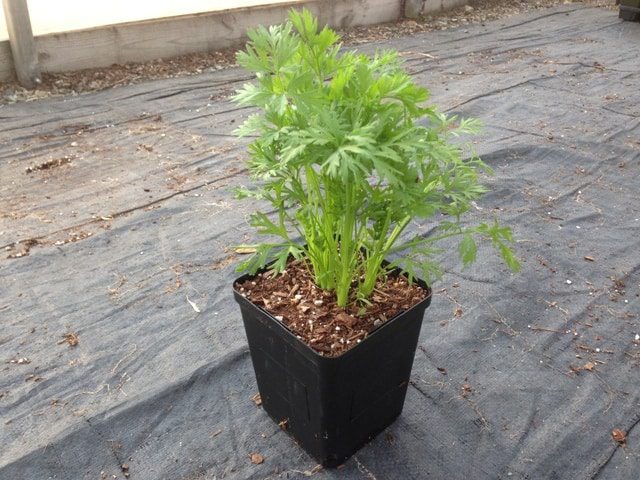How To Make A Garden Fence
When I first started gardening, the idea of a garden fence seemed useless to me. I didn’t really understand why delimitating the perimeter of my garden from the rest of the yard was important until my first crops grew. As soon as my plants started to produce delicious fruits they became a true magnet for wildlife.
On the other hand, without a proper fence, cats and dogs will also be able to ruin your edibles by simply walking on them or digging holes in the ground.
A garden fence is also useful to protect your flower beds from unwanted visitors.
On the market, there are countless garden fences to choose from yet many gardeners would like to find out how to make their own garden fencing.
If you are one of them, you might be glad to find out that making your own fencing is easy and, above all, economically convenient. All you need is patience and a few materials, but the result will pay off the extensive efforts made to beautify your property.
How To Protect The Garden From Wild Animals

A vegetable garden is attractive to many wild animals, such as boars, hares, and deer, to name just a few. Keeping them away from your crops is easy and in most cases, it is sufficient to install some type of mechanical barriers. In some cases you can even grow your own fruit and veg on a fence panel.
Usually, garden fences can be of three types, wire mesh, wooden fence and electric fence.
Although all three types can be effective, their cost varies depending on the solution. The wire and wooden fences are usually the preferred of the DIY enthusiasts. Making a garden fence yourself is the most inexpensive solution and also the most rewarding.
The electric fence is the most effective but also the most expensive type of garden fencing. In this case you will need to have your fence mounted by a professional; however, animals will most likely stay away from this type of barrier.
Let’s have a look at the various types of garden fences in detail.
Wire Mesh Garden Fence
Wire mesh is one of the most popular garden fencing solutions. This type of barrier will protect your crops from the assault of large animals such as boars, and will also keep away those animals that can jump, such as foxes or deer, or dig.
Although popular, wire mesh garden fencingis not exactly cheap. On the first hand, quality wire mesh is expensive. On the other hand, you will also have to invest in additional support elements designed to maintain your fencing in place.
Nevertheless, if you believe this is the right solution for you, making your own wire mesh garden fence is fairly easy.
How To Make A Wire Mesh Garden Fence
Materials
- Sufficient wire mesh to surround the desired perimeter;
- Concrete poles;
- Digging tools.
DIY
- The first step in making your own wire mesh garden fence is represented by the delimitation of the perimeter to enclose.
- Mount a concrete pole on each corner of the perimeter. To do this, dig holes of at least 20 inches and bury one end of the pole in the ground. The height of the pole on the surface should be at least 70 inches.
- Dig a narrow trench with a depth of at least 20 inches between the poles, then mark the spots where you should mount other poles if necessary. To provide adequate support to your fence, the distance between the poles shouldn’t be more than 16 feet.
- Mount all the poles as you did with the first four.
- Mount the wire mesh and secure it against the poles. To prevent all animals from entering your garden, make sure that at least 20 inches of your fencing are underground and the height of the fence is at least 70 inches. Also, remember to leave room between two poles to mount a garden gate.
Wooden Garden Fence
The wooden garden fence is the most classic solution. This type of fencing is usually made of wooden boards connected together either with wire or with horizontal wooden boards.
This type of fence, if well structured, can protect the garden from wild boars and hares yet it is unlikely to repel the attack of animals such as rats, foxes, or deer.
Nevertheless, a wooden garden fence is a stylish solution if you don’t live in a rural area and just want to protect your veggies or flower beds from your pets.
Since recycling became so fashionable, a great way of building a wooden fence is with recycled old wooden pallets.
How To Make A Wooden Garden Fence
Materials
- Wooden pallets;
- Hacksaw;
- Hammer;
- Nails;
- Wood paint or varnish.
DIY
- Remove the wooden boards from one side of the pallet. This will reduce the thickness and will also make it resemble a traditional wooden fence.
- Paint the pallet in the preferred color or treat it with transparent varnish if you want to maintain the natural effect.
- Use the removed wooden boards to create a gate to the garden and also a few planters to mount on the fence.
- Dig a trench of a few inches deep and use it as support for your pallet fence. Use as many pallets as necessary to make a fence around your vegetable garden or to protect a flower bed from intrusions.
This type of fencing is also beautiful to mount along a driveway or to create an edge between the patio and the garden.
Electric Garden Fence
If the main purpose of a garden fence is that of protecting your vegetables or flowers from wildlife, then an electric garden fence might be the best solution.
Most of the times, installing an electric garden fence is expensive and you might need the help of the experts. Nevertheless, there are a few alternative solutions that allow you to make your own electric garden fence.
How To Make An Electric Garden Fence
Materials
- Support poles;
- Electrodes;
- Wire and insulators.
DIY
- You will need to invest in two types of support poles, ones designed to give strength to the fence and that should be placed in each corner of the perimeter and other poles designed to offer support to the wires. The poles should be placed at distances of about 6 feet.
- An electric fence uses a voltage between 8 and 15 kV, therefore it is important to use proper insulation. Insulators should be mounted on the poles. They are made of plastic or ceramic and can isolate up to 20.000 volts.
- Mount conductor wire around the poles to create the fence, passing the wire through each insulation. Copper wires are the best yet they are rather expensive. For a more economical solution, you can opt for galvanized iron wire with a diameter of at least 1.2 millimeters.
- The next step is to mount electrodes along the wires. On the market, there are available three types of electrodes that either use electricity from a power outlet, work with battery or with energy accumulators. When choosing the electrodes you should also pay attention to their power and choose ones suitable depending on the types of animals you’re protecting your garden from.
- For the installation of the electric fence, I recommend using at least three wires mounted at different heights. The first wire should be installed at about 10 inches above the ground, the second at 20 inches and the third at about 45 inches high.
- To provide an even better protection, you can interweave the electric wires with non-electric ones, especially at the level of the ground.
Besides this method, on the market, there are also available electric fence kits that contain all the necessary materials for the creation of electric garden fences.
Final Thoughts
Fencing your garden is always a good idea. Wooden fences can certainly boost the value of your property by enhancing the curb appeal, wire fencing is a simple solution to repel pests and electric fences are designed to keep even the most stubborn wildlife away.
On the other hand, regardless of the garden fence, you like, making it yourself will make you value your property, even more, not to talk about the satisfaction of beautifying or protecting your garden without external help.
Now, all you have to do is to choose which type you want to build and make the garden fence of your dreams!





